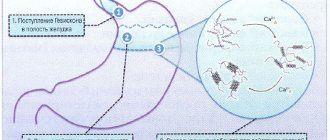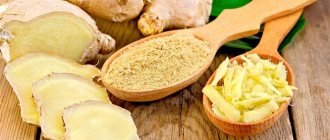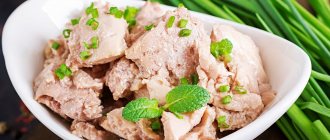However, it’s hard to call lard a dietary product. It’s unlikely that anyone has ever heard a gastroenterologist recommend including it in the diet. However, it cannot be said unequivocally that lard only causes harm. This product, when used correctly, has a positive effect on the human body.
The effects of lard on the body
For health, the body needs plant and animal fats. The layer of subcutaneous fat of animals contains triglycerides of saturated acids and hormones.
The benefits of lard for the body
- Lipids are indispensable for the construction of biological membranes. In combination with carbohydrates, the compounds provide the body with energy.
- In terms of fatty acid content, lard is identical to vegetable oils.
- Arachidonic acid contained in lard is not found in other foods. The substance promotes the proper functioning of the heart muscle, increases the efficiency of the immune system, regulates cholesterol levels, and is also an antidepressant.
- Subcutaneous fat does not contain carcinogenic, radioactive and other harmful substances and parasites that live in intermuscular fat.
- Other fatty acids of lard (linolenic, palmitic, oleic, stearic) support the functioning of the brain and central nervous system, increase the strength and elasticity of blood vessels.
- The antioxidant properties of lard reduce the risk of cancer.
- Adaptogens of natural origin increase the body's resistance and help to survive in the extreme climatic conditions of the north.
- Lard is a product of natural origin, does not contain preservatives or dyes, which has a beneficial effect on the human body.
- When properly prepared and stored, lard does not lose its nutritional and beneficial properties for a long time.
Harm of lard to the body
Lard is not a difficult-to-digest product, but it causes heaviness in the stomach if consumed in excess due to its salt content. Smoked and boiled lard are unhealthy foods that should be avoided. Fresh salted or pickled lard in small quantities is useful.
If a person is healthy and does not suffer from excess weight or diseases of the gastrointestinal tract, gall bladder or liver, he can eat 20-30 grams of lard per day. For people prone to obesity and gastrointestinal diseases, the daily intake of this product is 10 grams.
Harmful properties
Lard is quite well absorbed by the body, but can often burden the stomach if consumed in excess. This happens due to the large amount of salt that is used to make lard. The product will not be beneficial if it is smoked, boiled, or fried (cracklings). It is better to eat fresh lard, salted or pickled, and even then in small quantities.
A healthy person who does not suffer from diseases of the gastrointestinal tract, liver, gall bladder, or pancreas is allowed to consume 20-30 g of the product per day.
For people with gastrointestinal diseases or overweight, it is permissible to consume no more than 10 g of fat per day.
Features of the diet for gastritis
Gastritis is a common disease. Reasons: poor diet and daily routine, overeating, poor-quality products and improper preparation, alcohol abuse and smoking. The disease is treated by taking medications and diet for several weeks or even months. During this time, strict dietary restrictions are observed. Only natural products containing components necessary for the body are used.
Gastritis is a disease in which the gastric mucosa is damaged and irritated. The choice of acceptable ingredients depends on the degree and type of disease, but for any type of gastritis, salty, spicy, fatty and hard foods are prohibited.
Acute gastritis
Nutrition during exacerbation of chronic gastritis should protect the mucous membrane from mechanical, thermal and chemical influences. The restrictions at this stage are strict: foods that stimulate the secretion of gastric juice are prohibited. Food is prepared in the form of liquid purees, soufflés, slimy porridges and jelly. Meat that has been removed from fat, skin and tendons, chopped in a blender, and lean fish are allowed. Add a little butter or ghee to the boiled porridge. Consumption of vegetable oils will help heal wounds and damage to the mucous membrane.
Fatty, spicy, pickled, salted and smoked foods are contraindicated. Lard consists of fat and is unacceptable for dietary nutrition at the stage of exacerbation of the disease.
Gastritis with high and normal acidity
With increased acidity, smoked foods, pickled vegetables and dishes that cause the secretion of gastric juice are contraindicated. To restore the gastric mucosa, it is also recommended to avoid hard, tough, hot and cold foods. Food is steamed, in a slow cooker or boiled in water.
Eat meals in small portions so as not to overload the stomach.
List of prohibited foods for gastritis with high acidity:
- fatty meat and fish;
- sausage or bacon with lard, small sausages;
- salted, pickled, smoked lard;
- brisket, undercut;
- salted, sour and pickled vegetables;
- rich broths;
- dishes fried in oil or lard;
- vegetables and root vegetables that have not undergone heat treatment;
- sour fruits and berries;
- spinach, radish, radish, cabbage;
- corn, lentils, peas, beans;
- pickled vegetables and mushrooms, sauerkraut;
- baking;
- fresh rye bread;
- canned food;
- salt.
Gastritis with low acidity
The diet for this disease is less strict. Its action is aimed at stimulating gastric secretion. Food that is difficult to digest or irritates the stomach is eliminated from the diet.
It is not necessary to grind or grind the products with a blender. You can eat fried (but without hard crust or breading) dishes, and also introduce fiber and meat products into your diet to produce gastric juice.
Prohibited for gastritis with low acidity:
- rich and flaky pastries;
- corn, peas, beans, lentils;
- fatty meats and poultry;
- lard, lamb and beef fat;
- smoked meat, pork chops, brisket;
- pickled vegetables and mushrooms;
- raw onions and garlic;
- fresh vegetables and fruits with rough and thick skin;
- berries with rough seeds and skin;
- sharp salty cheeses.
Overeating, as well as eating too hot and cold foods, is unacceptable.
With low acidity, pickled ginger root will help digest food and improve the production of gastric juice, but introducing the product into the diet is permissible only after consultation with your doctor.
How not to make a mistake in choosing
Regardless of whether you want to purchase ready-made salted salsa or choose a fresh piece and salt it yourself, you need to pay attention to the following parameters:
- Consistency . The lard should be elastic and hold its shape well. Either a product that is too hard or a liquid that spreads under your fingers should raise doubts.
- Smell. Fresh lard has a delicate, milky smell. Male lard has a sharper aroma, which will be difficult to remove. It is better to buy a ready-made salty product without unnecessary spices also because they very successfully mask the “flavor” of a stale dish.
- Color. High-quality lard is white with a slight pinkish tint. If it is reddish, it means it was taken from an older animal. If the product has a yellowish or grayish tint, it means it has been on the counter for a long time.
- Thickness. All the most useful substances are contained in the nearest 2.5 cm from the skin. Therefore, the braid you choose should not be too thick.
Period of recovery and remission
When the symptoms of the disease disappear, strict restrictions can be abandoned. The menu includes foods that do not cause symptoms or exacerbation of the disease. Lard, which is recommended to be consumed with bread, is also beneficial in moderation. A sandwich made of rye bread with a thin piece of lard will replace a sandwich with red fish in terms of nutritional properties. In addition, natural lard outperforms industrial sausages and frankfurters, which consist of soy and flavor enhancers.
Lard is made from fresh lard, which can be used to cook without fear for your health and stomach: it does not smoke and does not impregnate food with carcinogens. Lard is even suitable for making homemade baked goods.
The harm of lard only appears when consumed in moderation. Smoked, boiled and fried types of lard (cracklings) are harmful even to a healthy stomach. If the lard is homemade, fresh, tender and not over-salted, then it will not cause harm.
In what quantity and what type can you eat?
Of course, lard is a healthy product when consumed in moderation, but it can be very harmful if consumed in large quantities.
Where is the line beyond which the benefits of lard turn into harm? The method of processing lard is of primary importance. The most positive option for the body is salted bacon without adding hot seasonings that irritate the stomach .
Salsa salted with garlic is considered beneficial for the cardiovascular system, but this is not the most gentle dish for the stomach. In general, patients with gastritis are allowed to eat bacon only during periods of stable remission in small portions. It should not contain foreign additives and be overly salty.
Boiled lard loses most of its vitamins during heat treatment and is then less easily absorbed. When frying, carcinogens and other toxic substances are formed in it, which are especially dangerous for diseases of the digestive system.
Peculiarities . The nutritional value of lard also depends on the method of its preparation. The calorie content of 100 g of salted lard is about 800 kcal, smoked and fried - 750 kcal, boiled - 500 kcal.
The amount of product eaten per day is also important. Nutritionists recommend limiting its consumption to 30 grams for healthy people and 10 grams for patients with gastritis.
It is best to eat salsa with rye bread or boiled potatoes. Both products are allowed during the period of remission of gastritis and improve the digestion of fat.
Features of lard as a food product
Lard contains a number of monounsaturated, saturated and polyunsaturated acids that are essential for the body, some of them are found only in animals, for example, arachidonic acid.
The digestion time is 5–6 hours, so even healthy people are not recommended to use it daily. But the content of essential acids is higher than in beef fat, which takes much longer to digest.
It contains more oleic, linoleic, palmitic and linolenic acids than other animal products. This is the so-called complex vitamin F, which we usually get from vegetable oil. If we also take into account the relatively low cholesterol content, then compared to butter it is 4–5 times healthier.
Advice from a gastroenterologist
When a patient asks a doctor whether he can have sausage , dumplings or other semi-finished products , in each case it depends on the stage of the disease and the characteristics of its course. So, with atrophy of the mucous membranes and low acidity, meat products are useful, as they stimulate the production of digestive juices.
But these should not be purchased semi-finished products, which, even if the technological process is followed, usually contain preservatives and spices.
For example, white chicken meat is included in the diet for stomach ulcers; it is a source of proteins necessary for cell repair. But chicken broth cannot be used for cooking, just like beef broth. It is better to cook vegetable soup and add pieces of meat to it.
Following a diet for gastric ulcers helps to protect the mucous membrane as much as possible and prevent the opening of the ulcer. Your doctor may occasionally allow you to eat certain foods in limited quantities. But you need to monitor the patient’s condition, if unpleasant sensations or pain appear, exclude them from the diet and consult a specialist.
List of foods and dishes that are included in the diet for duodenal ulcers
- Puree semolina, rice, oatmeal, buckwheat milk porridge.
- Steam or baked omelette.
- Non-acidic cottage cheese, milk, sour cream (in dishes, for example, soups).
- White bread, freshly baked (no more than 300 g per day) or dried biscuits.
- Cereal, slimy soups, puree soups, soups with pasta.
- Quelles or soufflé made from beef, veal, chicken, rabbit, turkey, lean fish.
- Potatoes, zucchini, pumpkin, cauliflower, broccoli, carrots, beets in the form of puddings and purees.
- Kissels, smoothies, fruit jelly, sweet berries.
- Tea diluted with milk, rosehip decoction, milk jelly, chicory coffee drink with milk, non-acidic compotes.
Benefits and harms
Tallow is the layer of fat between the pig's muscle tissue and its skin. It represents a certain supply of nutrients that is consumed if the animal eats little or inadequately. The same process occurs in humans. The composition is similar to fish oil and includes triglycerols. What makes lard healthy is:
- Contains 60% monounsaturated fats, which are especially useful for those who live in cold parts of the country, since with their help even severe frosts are more easily tolerated.
- Arachidonic acid, present only in lard, is beneficial for the functioning of the brain, heart and nervous system, as well as strengthening the immune system.
- Vitamins E and D normalize metabolic processes in children, and improve the appearance of the skin in adults.
- It can be eaten without heat treatment, since bacteria and parasites do not develop in it.
- Contains less bad cholesterol than butter.
- Vitamin E helps prevent atherosclerosis and heart function.
- Selenium in lard prevents the development of cancer and is useful for women planning pregnancy.
- It is perfectly absorbed and does not burden the liver.
Basically, problems arise only if you abuse it in food and eat more than 30 grams daily, and if you are overweight and have diseases of the gastrointestinal tract, more than 10 grams. And you need to take into account that the fresh product is much healthier than the salted one. It is best to eat fresh with a minimum amount of salt, but boiled, fried and smoked lard highly seasoned with spices is best avoided.
We recommend: How does it hurt and how to relieve stomach pain with gastritis?
Is there any harm from lard?
Frying, boiling, and smoking partially destroy beneficial substances, so it is better to use salted lard. The cholesterol it contains is harmful, but it is less than in other animal oils.
If you do not overuse lard, it helps to obtain the necessary microelements (selenium, zinc, magnesium) to increase resistance and protective functions. But daily consumption not only affects digestion and increases the load on the stomach, but also contributes to disruption of cholesterol metabolism, the development of atherosclerosis, liver and pancreas diseases.











